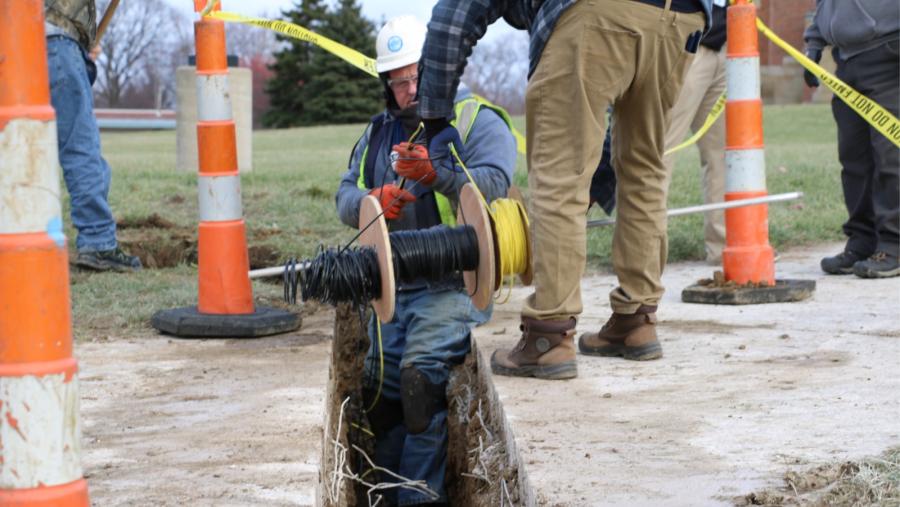Understanding Winter’s Impact on Underground Infrastructure

Main breaks are a common issue during winter, especially for water systems similar in age and climate to Cleveland Water’s. While the increase is expected, the exact cause isn’t fully known.
In an effort to better understand why main breaks happen in winter, as well as proactively address them, Cleveland Water engineers have developed an innovative tool.
At the beginning of the winter season, two, ten-foot-long temperature sensor arrays, each with 21 temperature probes, were installed vertically in the ground at our Parma Control Station. The probes are spaced six inches apart and transmit soil temperature to a data collector every 15 minutes.
One of the arrays was installed near a 36-inch transmission main and the other farther away from the main. The one near the main will study what effect the cold water in the main has on soil temperature as compared to the one farther away.
The collected data is being used to monitor frost depth. Frost depth is how deep water in soil freezes. Northern Ohio’s frost depth is 3 to 3 ½ feet. Water mains and connection lines in Cleveland Water’s system are buried more than 5 feet deep in order to be below the frost line and prevent the water inside from freezing.
However, as the water in the soil freezes, it exerts increased pressure on anything below, including underground water mains. The deeper the frost line, the more external pressure on the water main and the more likely the main is to fail under the higher loading.
By collecting soil temperature data and overlaying it with other weather parameters, such as lake water temperature and air temperature, as well as main break data, our engineers hope to gain a better understanding of the development of frost and what impact it has on main breaks.
Planning and design of the frost depth sensor system began last winter after a multi-week cold snap of single-digit temperatures resulted in over 100 active main breaks during the first five days of January 2018
As the 9th largest public water system in the country, Cleveland Water maintains more than 5,300 miles of water mains throughout our 640-square mile service area. While we prepare every fall for the anticipated increase, each winter brings a different challenge as exact weather events can never be anticipated.
But by increasing our understanding of the forces pushing on buried water mains, data collected long-term should give us an early warning as to when an increase in main breaks will occur. The ability to forecast when an increase of breaks will start to occur will enable Cleveland Water to respond proactively to breaks.
Even with this ability, our focus remains on the renewal of our underground infrastructure. That’s why we’re investing approximately $26 million a year replacing aging mains that are more likely to break.
